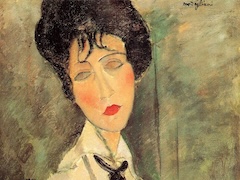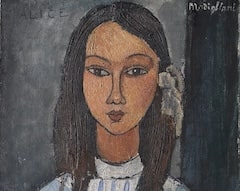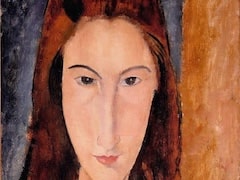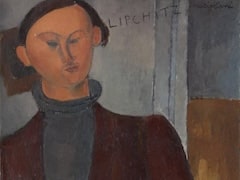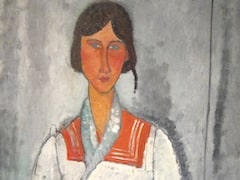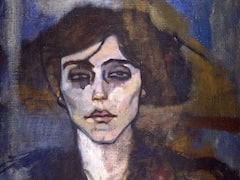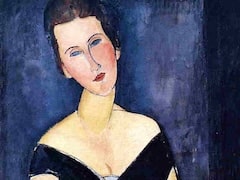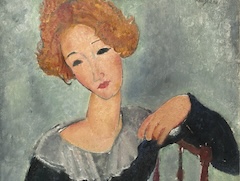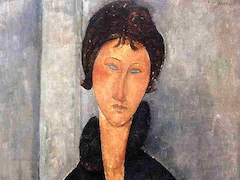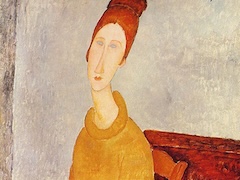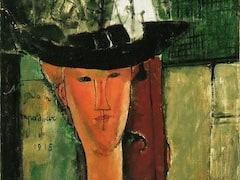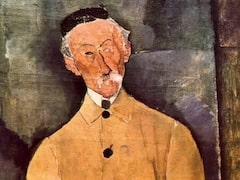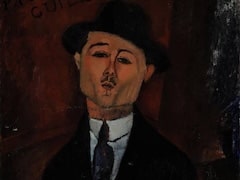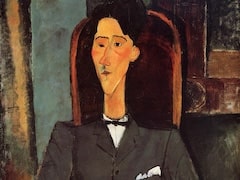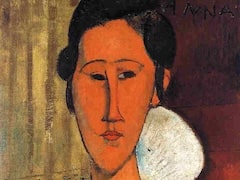Chaim Soutine, 1916 by Amedeo Modigliani
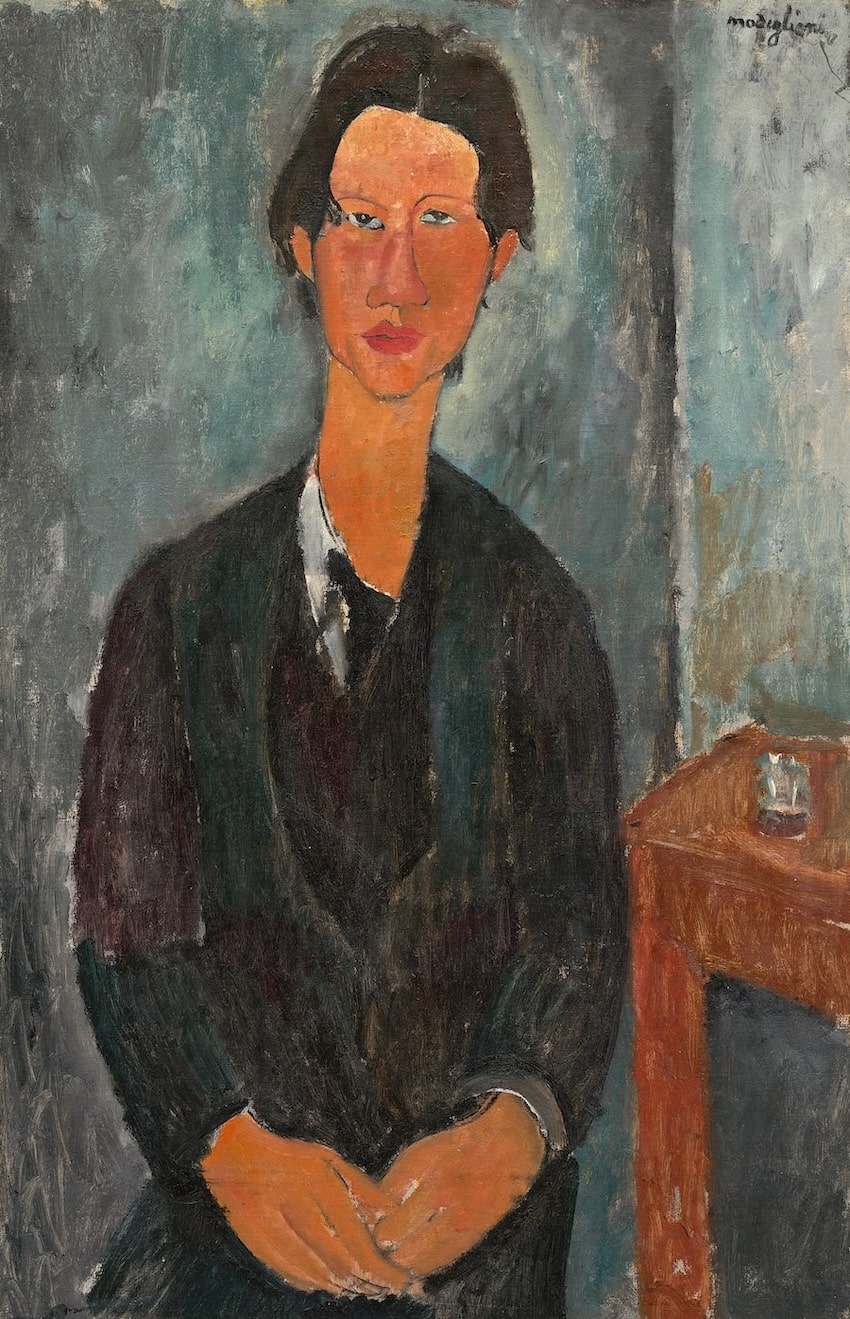
Painted in 1916, Chaim Soutine presents an evocative representation of the Lithuanian artist. Chaim Soutine, celebrated for his powerful and emotionally rich creations, shared a profound connection with Modigliani, both in personal and artistic dimensions. This bond is palpable in the portrait, where Modigliani's signature elongation of shapes and stylized attributes express Soutine's passionate and contemplative nature.
The portrait showcases Modigliani's muted palette and vigorous, expressive brushwork. The delicate play of light and shade introduces depth and dimension to Soutine's visage, emphasizing his distinctive features and intense stare. Soutine's eyes, often referred to as the portals to the soul, are especially compelling in this artwork, mirroring his inner struggles and creative fervor.
Modigliani's intrigue with African artistry and Italian Renaissance influences shines through in "Portrait of Chaim Soutine." The mask-like essence of Soutine's visage, with its sleek lines and stylized characteristics, embodies Modigliani's appreciation for African sculptures, which he encountered during his stay in Paris. Furthermore, the graceful contours and balanced proportions of the figure echo the works of revered Italian Renaissance artists.
The composition of the painting is both straightforward and profound. The close-up perspective of Soutine fosters an intimate bond between the viewer and the subject, encouraging reflection on Soutine's feelings and persona. Modigliani's adept use of color and form creates a cohesive equilibrium, highlighting the purity and integrity of the portrait.
Chaim Soutine transcends being merely a portrayal of an individual; it delves into the dynamics between two artists who significantly shaped one another's artistry. Through his unique visual expression, Modigliani encapsulates Soutine's essence, infusing the artwork with complexity and depth. The painting epitomizes Modigliani's profound empathy and intrigue for the individuals he depicted, often those within his circle of friends and peers.

